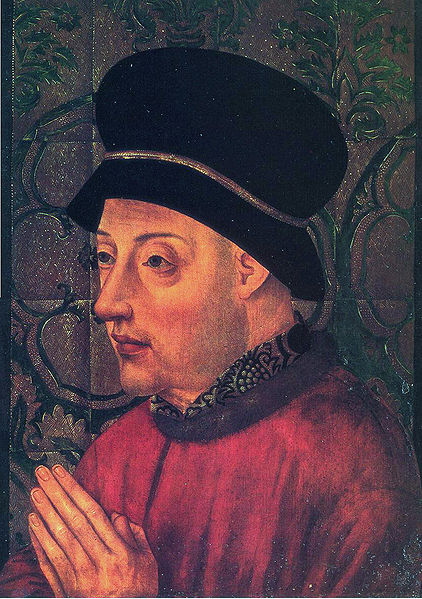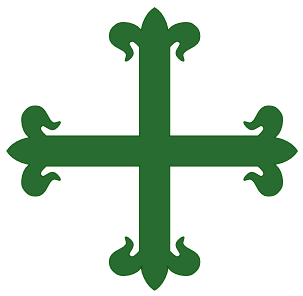<Back to Index>
- Astronomer William Wallace Campbell, 1862
- Poet Manuel José Quintana y Lorenzo, 1772
- King of Portugal and the Algarves João I, 1358
PAGE SPONSOR


John I (or João I; Lisbon, São João da Praça (extinct), 11 April 1358 – Lisbon, Castle, 14 August 1433), called the Good (sometimes the Great) or of Happy Memory, more rarely and outside Portugal the Bastard, was the tenth King of Portugal and the Algarve and the first to use the title Lord of Ceuta. He was the natural son of Peter I by a woman named Teresa Lourenço, who some say was a noble Galician, daughter of Lourenço Martins, o da Praça, and wife Sancha Martins. In 1364 he was created Grand Master of the Order of Aviz, by which title he was known. He became king in 1385, after the 1383 – 1385 Crisis.
On the death of his half - brother Ferdinand I in October 1383, without a male heir, strenuous efforts were made to secure the succession for princess Beatrice, Ferdinand's only daughter. As heiress presumptive, Beatrice had married king John I of Castile, but popular sentiment was against an arrangement in which Portugal would have become virtually united with Castile. The 1383 – 1385 Crisis followed, a period of political anarchy, when no monarch ruled the country.
On 6 April 1385, the council of the kingdom (cortes in Portuguese) met in Coimbra and declared John, then Master of Aviz, king of Portugal. This was in effect a declaration of war against Castile and its claims to the Portuguese throne. Soon after, the king of Castile invaded Portugal, with the purpose of conquering Lisbon and removing John I from the throne. John I of Castile was accompanied by French allied cavalry while English troops and generals took the side of John (Hundred Years War). John I then named Nuno Álvares Pereira, his loyal and talented supporter, general and protector of the Kingdom. The invasion was repelled during the summer after the Battle of Atoleiros and, especially, the decisive battle of Aljubarrota (14 August 1385), where the Castilian army was virtually annihilated. John I of Castile then retreated and the stability of John I's throne was permanently secured.
On 11 February 1387, John I married Philippa of Lancaster, daughter of John of Gaunt, who had proved to be a worthy ally, consolidating the Anglo - Portuguese Alliance that endures to the present day. After
the death of John I of Castile in 1390, without leaving issue by
Beatrice, John I of Portugal ruled in peace and pursued the economic
development of the country. The only significant military action was the siege and conquest of the city of Ceuta in
1415. By this step he aimed to control navigation of the African coast.
But in longer perspective, this was the first step opening the Arabian world to medieval Europe, which in fact led to the Age of Discovery with
Portuguese explorers sailing across the whole world. The global Muslim
population had climbed to about 8 % as against the Christian
population of 14 % by 1400. Contemporaneous
writers describe him as a man of wit, very keen on concentrating the
power on himself, but at the same time with a benevolent and kind
personality. His youthful education as master of a religious order made
him an unusually learned king for the Middle Ages. His love for
knowledge and culture was passed to his sons: Edward, the future king, was a poet and a writer, Peter, the duke of Coimbra, was one of the most learned princes of his time and Prince Henry the Navigator,
the duke of Viseu, started a school of navigation and invested heavily
in science and development of nautical topics. In 1430, his only
surviving daughter, Isabella, married Philip the Good, Duke of Burgundy and enjoyed an extremely refined court in his lands; she was the mother of Charles the Bold.